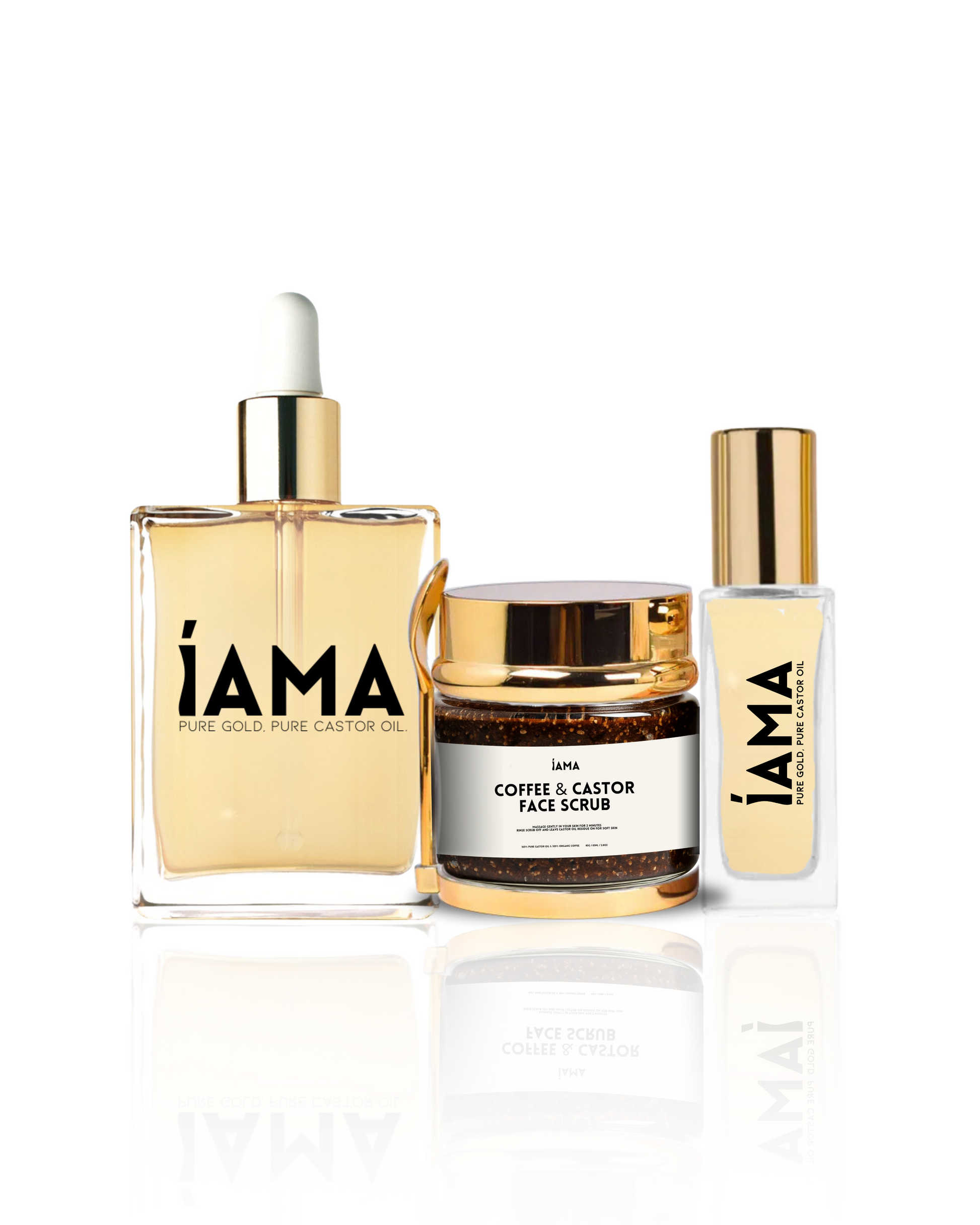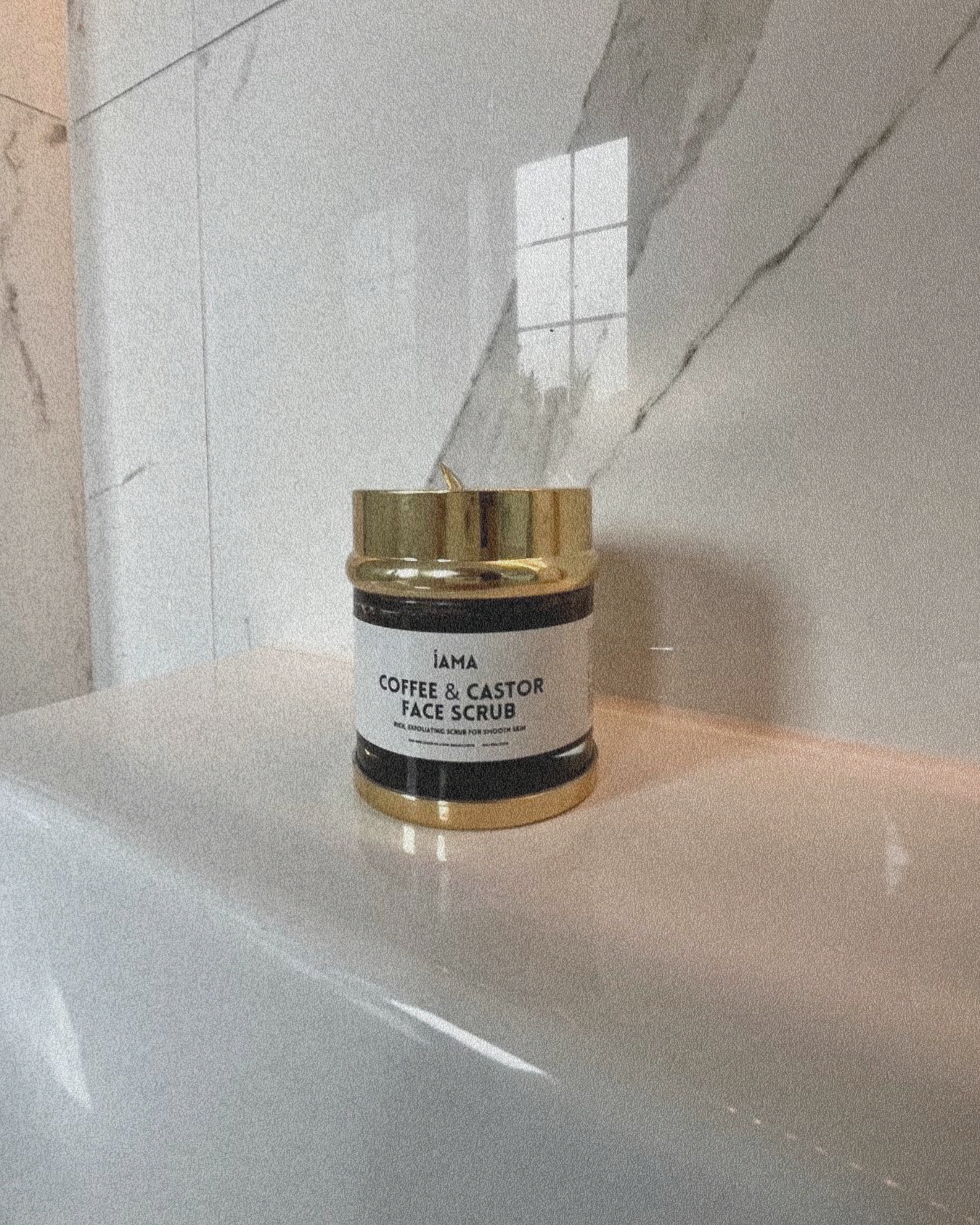Do you know what makes iAMA Castor Oil so potent? The secret is a gift from Mother Nature. A naturally occuring long chain fatty acid called ricinoleic acid is the main chemical component of castor oil. Infact, IAMA Castor Oil contains 90% ricinoleic acid - meaning it's densely packed with nutrients that heal you at a cellular level - with no added chemicals, fragrancies, stabilisers or nasties!
What is Ricinoleic Acid and What Makes it So Potent?
Ricinoleic acid is the main component of castor oil. It's a long-chain, unsaturated fatty acid with the chemical formula C18H34O3. This means it contains 18 carbon atoms as well as a hydroxyl group (-OH) on the 12th carbon, and a cis double bond between the 9th and 10th carbons.
Why does that matter?
The long chain and unique structure gives Ricinoleic acid and Castor Oil its remarkable healing capabilities, including being anti-inflammatory and antimicrobial.

Fatty acids like Ricinoleic acid that have longer carbon chains have distinct advantages vs shorter chain fatty acids such as Lauric Acid, Stearic Acid and Myristic Acid which are commonly used in skin care products.
Compared to other fatty acids, ricinoleic acid has a few distinctive qualities that make it a powerhouse ingredient
-
Higher viscosity and polarity. Higher viscosity and polarity means ricinoleic acid has a thicker, more "oily" texture and can more easily interact with and bind to other molecules.
-
Lower volatility. Lower volatility means ricinoleic acid is less likely to evaporate or break down compared to other fatty acids.
-
Increased hydrogen bonding capability. Increased hydrogen bonding capability allows ricinoleic acid to form stronger chemical bonds, contributing to its stability and efficacy. Hydrogen bonding is important for DNA repair processes due to its role in maintaining the structural integrity of the DNA molecule.
- Greater thermal and oxidative stability. Greater thermal and oxidative stability makes ricinoleic acid more resistant to heat and oxidation, enhancing its functionality in various applications.
How Does Hyaluronic Acid Compare to Castor Oil?
You're probably familiar with hyaluronic acid and perhaps you use it regularly. While hyaluronic acid is great for hydration, ricinoleic acid in castor oil actually strengthens and reinforce the skin's protective barrier. This is important, because a healthy, resilient barrier is key for preventing moisture loss and shielding the skin from environmental stressors.
Ricinoleic acid also has the unique ability to soothe deeper levels of skin irritation and inflammation. By acting on the cellular level, it can help restore balance and calm angry, aggravated complexions.
The end result? A smoother, more radiant glow.
Ricinoleic acid doesn't just temporarily plump up the skin like hyaluronic acid - it actually improves the underlying health and integrity of the skin for lasting luminosity.
So ladies, are you ready to discover the secrets of IAMA Castor Oil and harness the full potential of Mother Nature's own remarkable healing agent?







